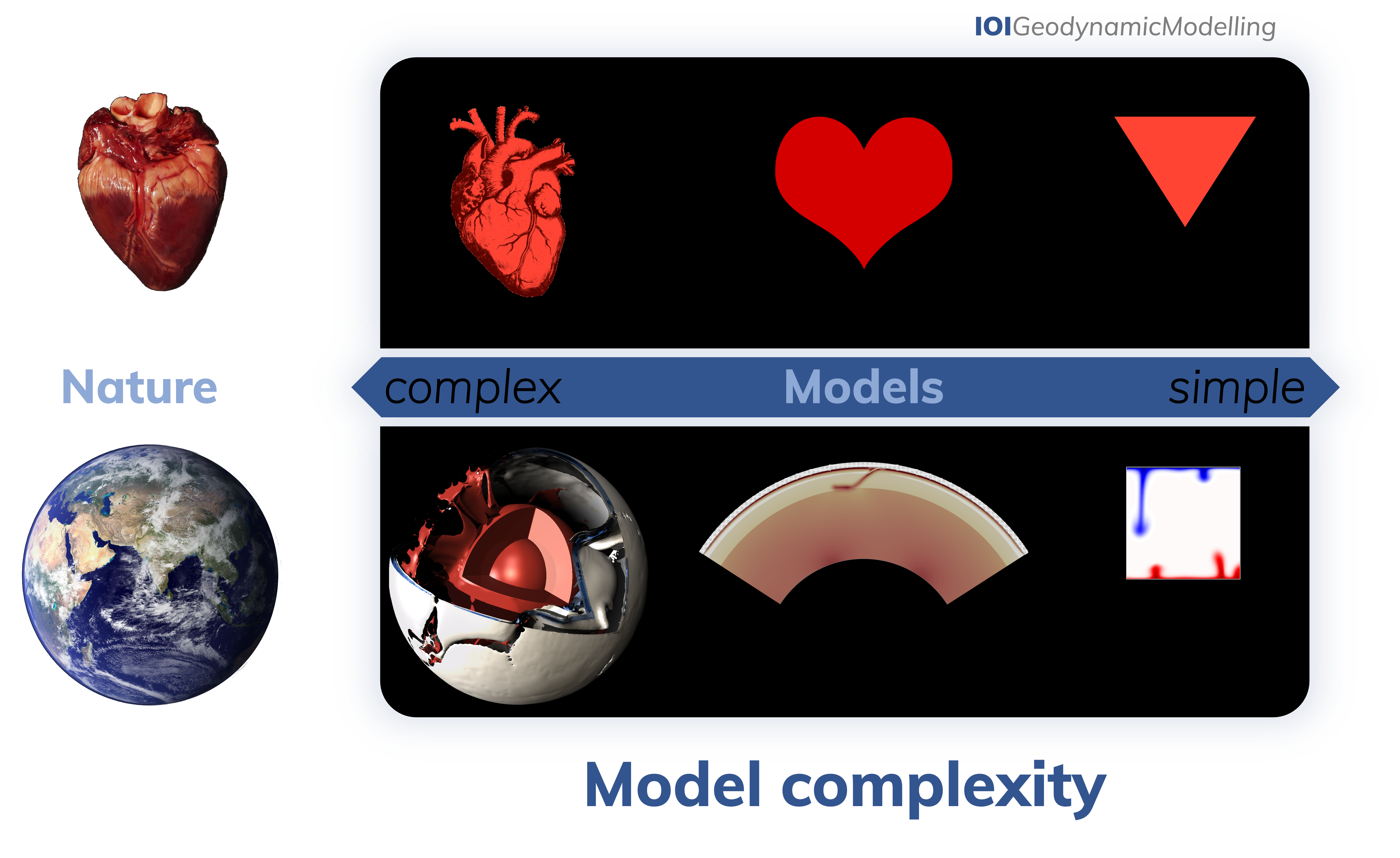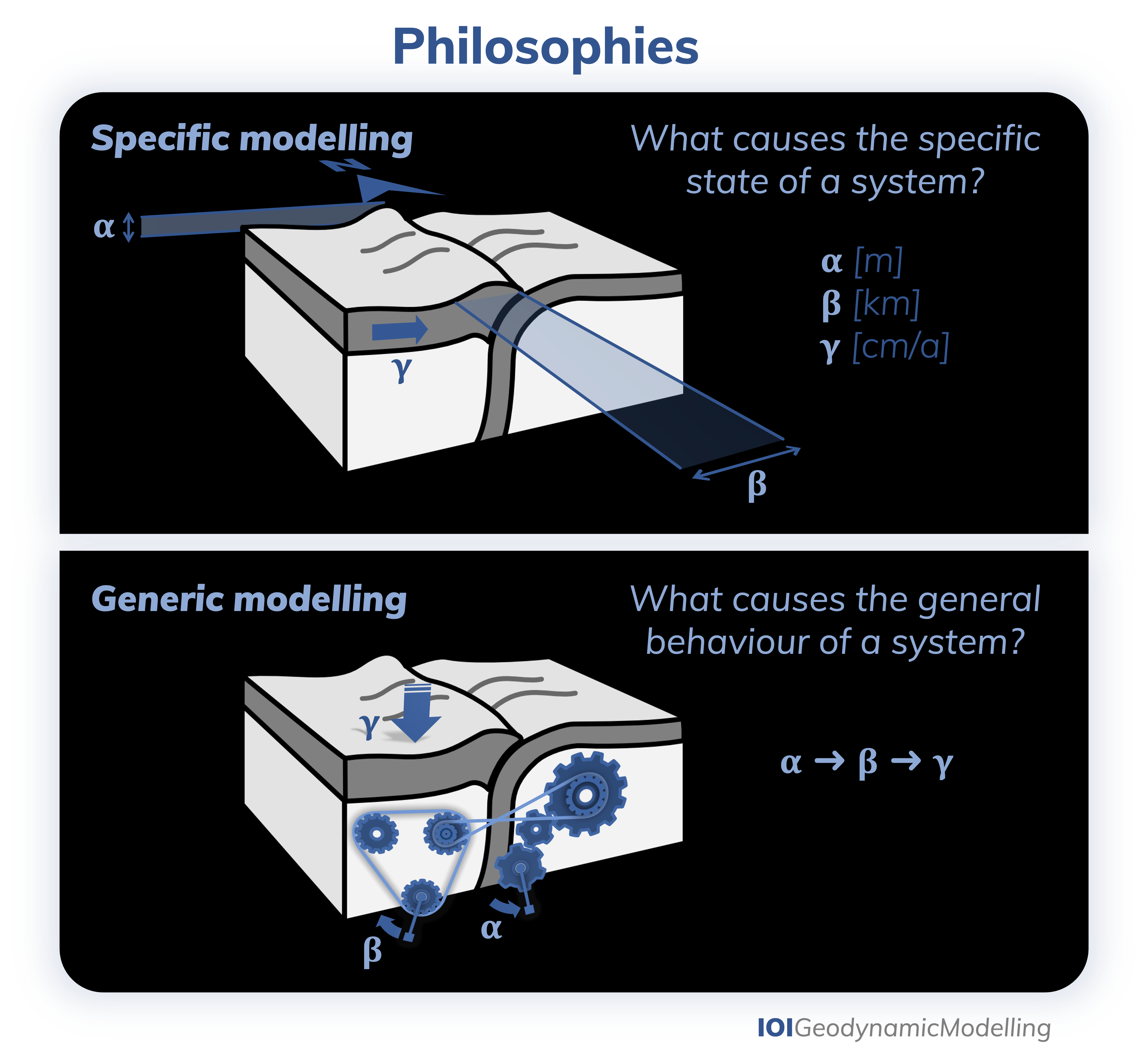Why?
The massive scales and inaccessibility

Geodynamic modelling provides a powerful tool to investigate processes in the Earth’s crust, mantle and core. To ensure high-quality modelling studies, fair external interpretation, and sensible use of published work, a basic understanding of numerical modelling is necessary.
The massive scales and inaccessibility
So much more than just running a model.
Conserving mass, momentum, and energy
A mesh of time and space
Keep it simple. But never too simple.
Specific or generic, which one should it be?
The Earth's interior spans massive scales, both in time and space. Most of these scales are inaccessible to direct observation. Indeed, these scales are hardly comprehensible.
Numerical modelling allows us to reproduce the evolution of the Earth's interior both during micro seconds or billions of years and over micro meters or thousands of kilometres.
Numerical modelling is the geoscientist's time machine, microscope and binocular in once.
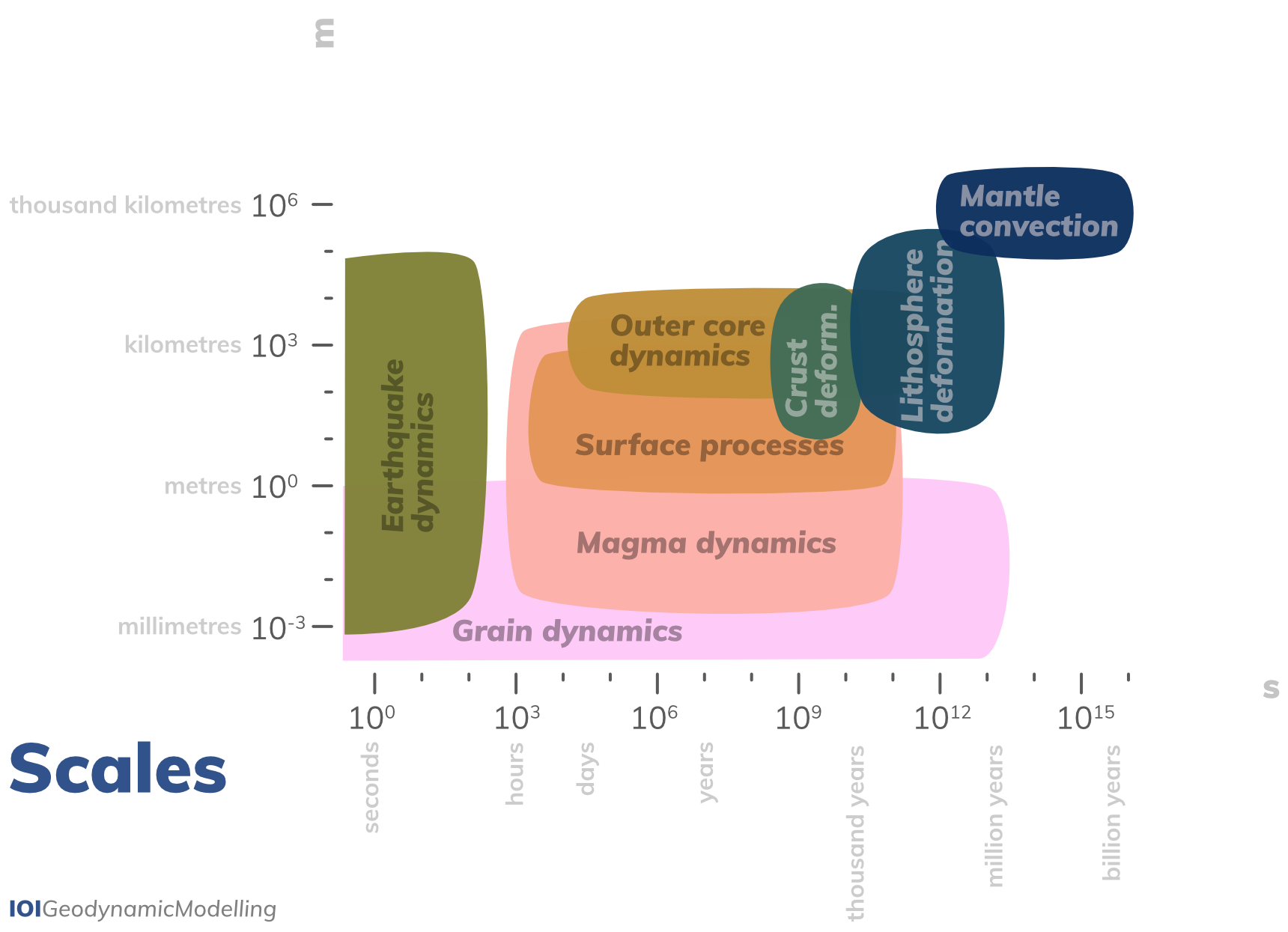
A modelling study encompasses everything from the assemblage of both a physical and a numerical model based on a verified numerical code, to the design of a (simplified) model setup based on a certain modelling philosophy, the validation of the model via careful testing, the unbiased analysis of the produced model output, the oral, written, and graphical communication of the modelling approach and results, and the management of both software and data.
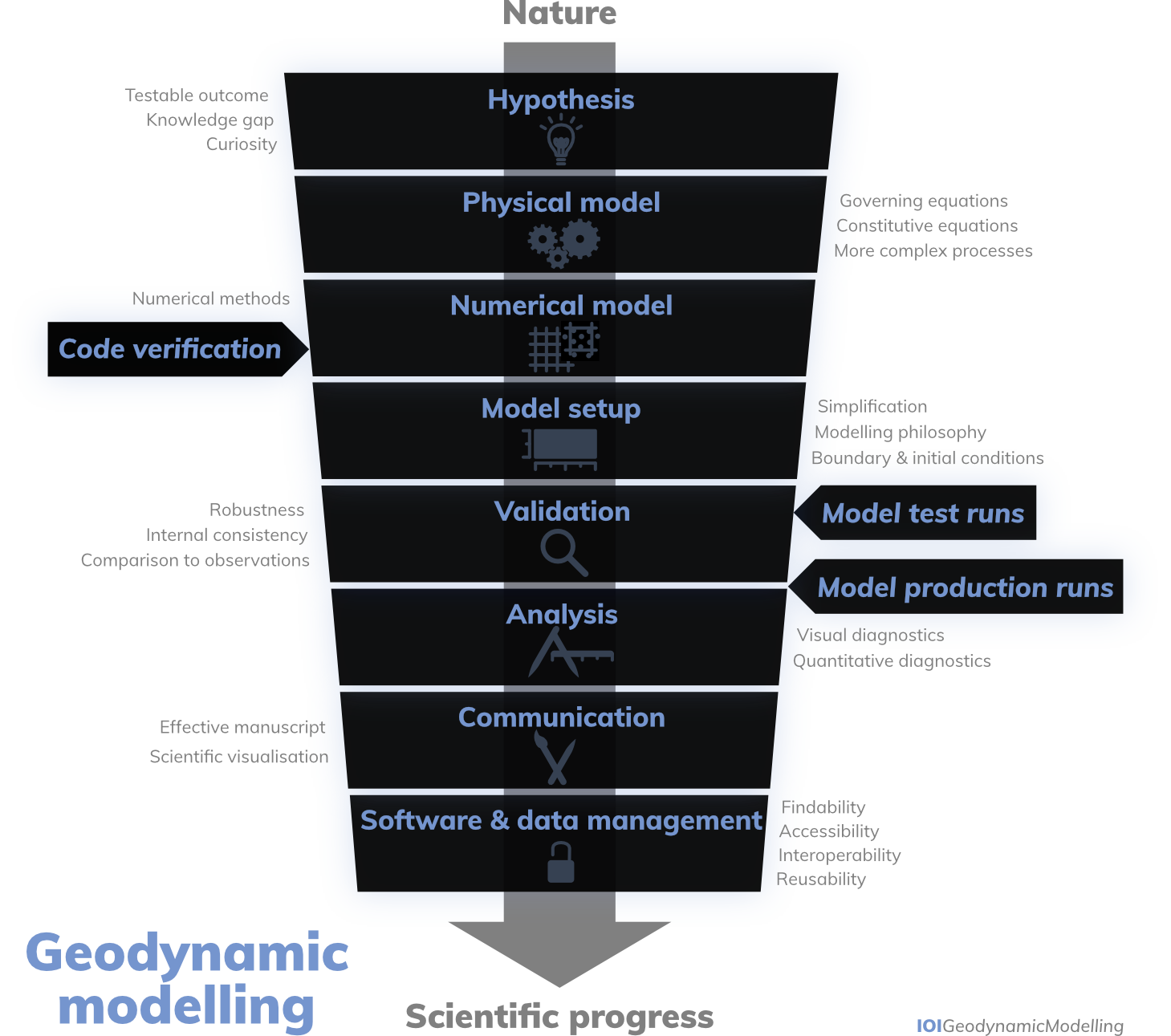
The governing equations are the conservation of mass, the conservation of momentum, and conservation of energy with different types of rheology.
Here,
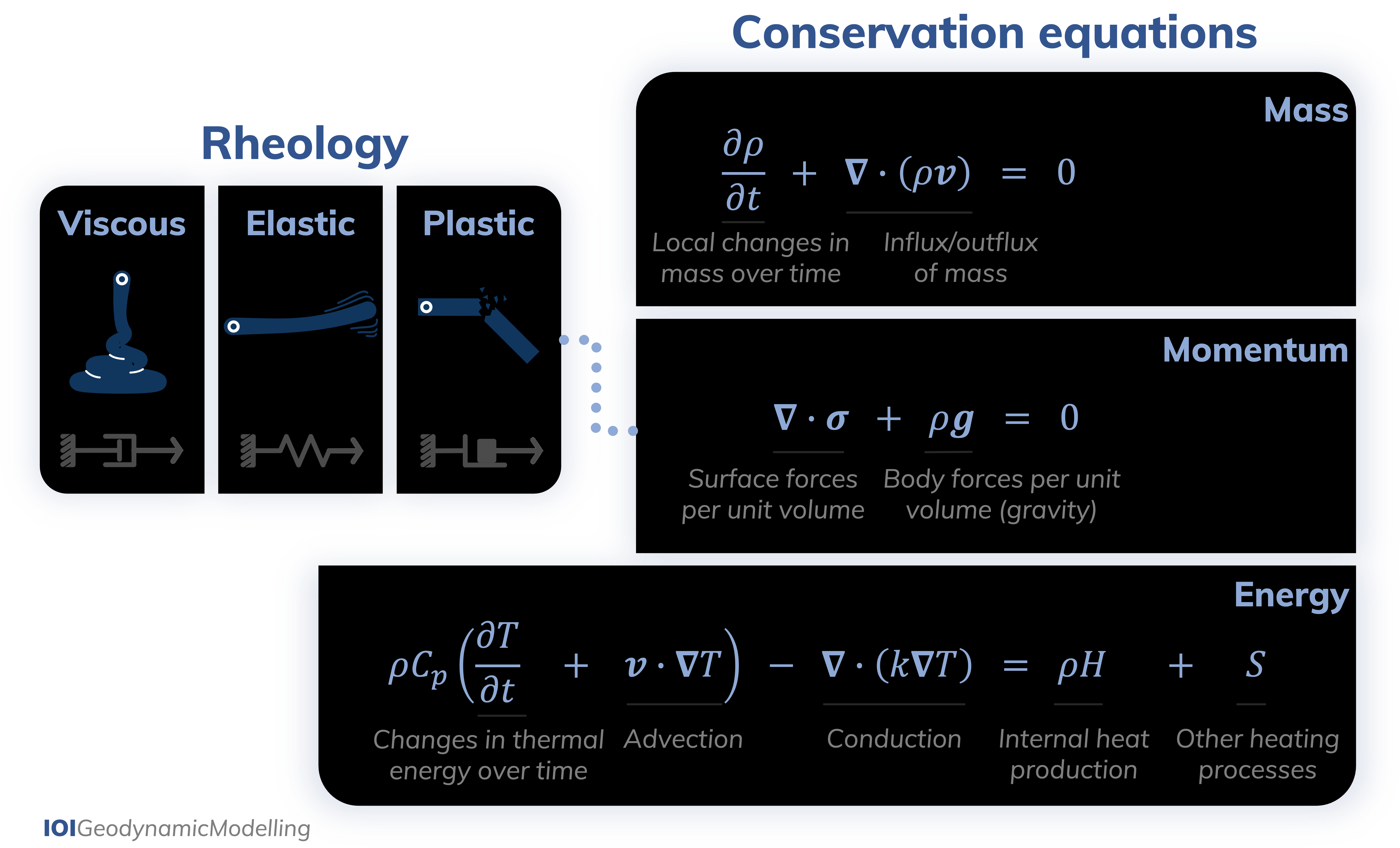
In order to model nature, one has to discretise time and space.
The 2-D domain discretisation on the bottom left illustrates different mesh types. The top half mesh is build on a quadtree with several levels of mesh refinement (top right) to better capture the interface of the circular feature. The bottom left quarter is based on an unstructured triangular mesh adjusted to align its element edges with the interface of the circular feature. Different methods of material tracking are available based on either the particle-in-cell method (top) or grid-based advection (bottom) .
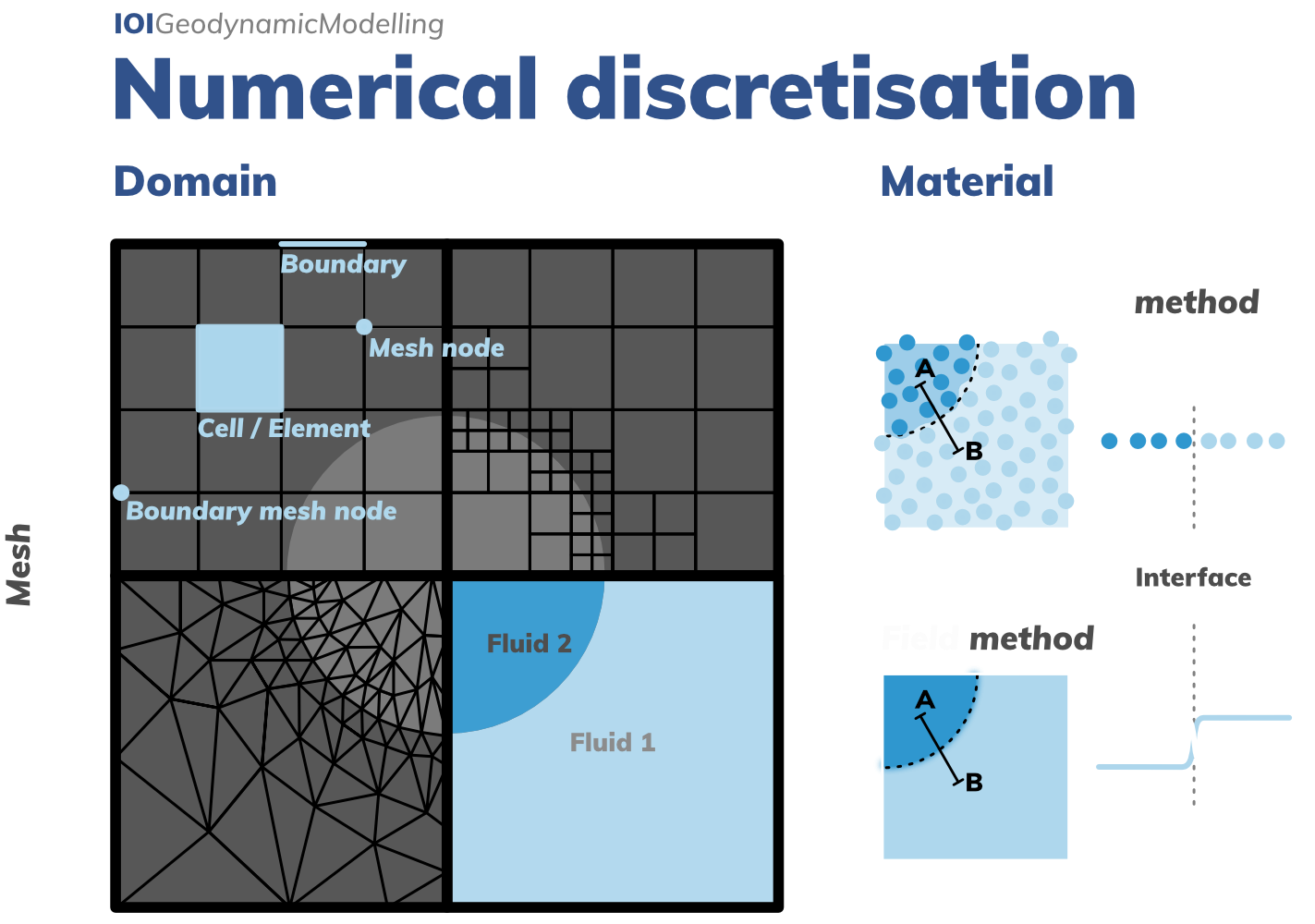
A simpler model can be more useful: the basic shape of the heart is likely the most successful model to-date, indeed a true icon: it is neither too complex (it can be reproduced easily), nor too simple (its characteristic shape is still recognisable). Finding the right level of complexity is challenging and must repeatedly be evaluated by the modeller for each new modelling task using the potential options for geodynamic model simplification.
